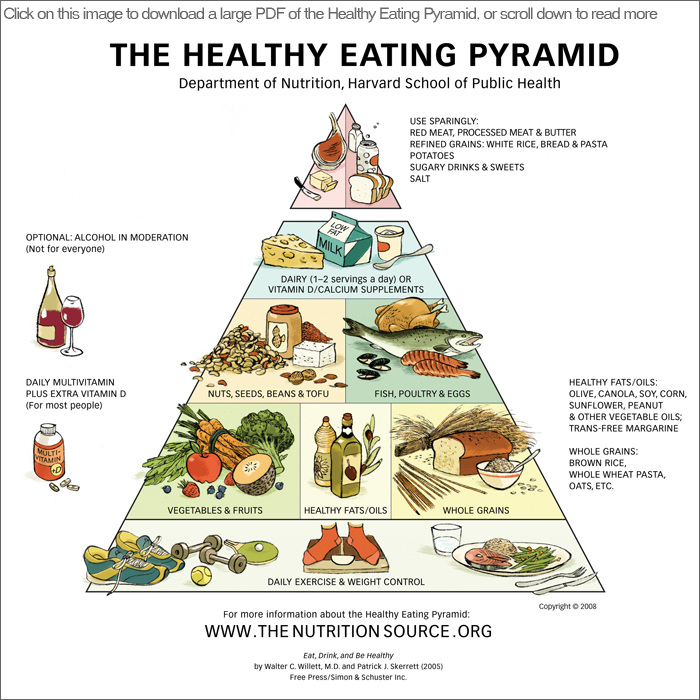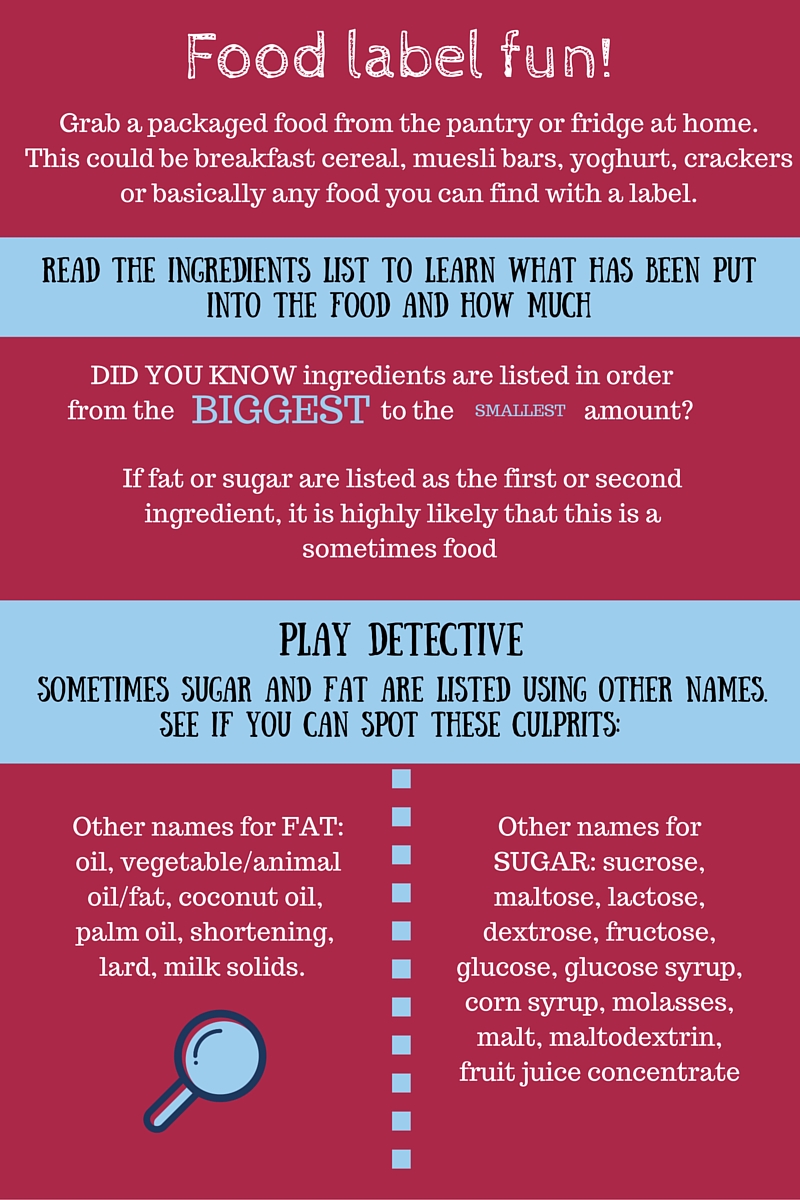40 macronutrients on food labels
Macronutrients: A Simple Guide to Macros - Avita Health System There are three types of macronutrients: carbohydrates, proteins, and fats. Carbohydrates contain 4 kcal per gram. Proteins contain 4 kcal per gram. Fats contain 9 kcal per gram (this is roughly double the amount found in the other two macros) Along with energy, all of these macronutrients have specific roles in your body that allows you to ... How Do You Know Your Food's Nutrition Facts Label Is Accurate? NIST's measurements are accurate to within 2% to 5% for nutrient elements (such as sodium, calcium and potassium), macronutrients (fats, proteins and carbohydrates), amino acids and fatty acids. As you may have noticed, most of your favorite food items have recently updated their nutrition facts labels.
Glycemic index is as reliable as macronutrients on food labels Glycemic index is as reliable as macronutrients on food labels. Am J Clin Nutr. 2017 Mar;105 (3):768-769. doi: 10.3945/ajcn.116.146092.

Macronutrients on food labels
Food Labels | CDC If you eat the whole thing, you are eating 8 times the amount of calories, carbs, fat, etc., shown on the label. Total Carbohydrate shows you types of carbs in the food, including sugar and fiber. Choose foods with more fiber, vitamins, and minerals. Choose foods with lower calories, saturated fat, sodium, and added sugars. Avoid trans fat. Macromolecules, macronutrients - how are they digested? - Sugar ... Macronutrients are the essential molecules that provide dietary energy to the body. They can be broken down into the following three nutrients. Carbohydrate Starch and sugars fall into the category of carbohydrates. Starch and sugars are made up of building blocks called monosaccharides (a monosaccharide is typically a single sugar unit). Food labels - NHS This type of label includes information on energy (kJ/kcal), fat, saturates (saturated fat), carbohydrate, sugars, protein and salt. It may also provide additional information on certain nutrients, such as fibre. All nutrition information is provided per 100 grams and sometimes per portion.
Macronutrients on food labels. Nutrition Facts Labeling — FDA Reader Vitamins, Minerals and Macronutrients. The following vitamins and minerals are required on the nutritional label "Supplemental Facts" section. They must be measured in terms of percentage of daily value and weight. The minimum requirement is listed below (must be listed in this order): Vitamin D, Calcium. Iron. Macronutrients_Micronutrients_Food_Labels.pdf - THE... The macronutrients are as follows. • Calcium is found in bones and is important to blood clotting and muscular function.• Phosphorus is found in bones, in ATP (adenosine triphosphate) and in nucleic acids.• Sodium, potassium, and chloride are important for proper fluid-level maintenance.• Magnesium is important to cellular metabolism. PDF Nutrition Basics: Macronutrients, Micronutrients & Hydration READING A FOOD LABEL As you go down the label, total fat, total carbohydrate, and protein are the three macronutrients to look for. These three nut\൲ients are energy-yielding nutrients also called macronutrients. These nutrients are contributors to calories in the diet. Macro Math Is Hard: Understanding Nutrition Labels ... - AlexMaclin.com Step 3: Calculate your MacroNutrients Once you understand how to read a label and have tools to measure the food, you can figure out how much protein, carbs, & fat (macros) you have present. Let's say you need 25 grams of carbs for your meal and you want to get it from the whole-grain pasta. Here's the label again.
Nutrient Claims on Food Labels | Home & Garden Information Center At least 25% less sugar*. Fiber Claims. (If food is not low in total fat, the label must state total fat in conjunction with the fiber claims.) High fiber. 5 grams or more. Good source of fiber. 2.5 grams to 4.9 grams. More or added fiber. At least 2.5 grams more*. Understanding Food Labels and Health Claims - Maricopa This label is called a Nutrition Facts panel, which gives information on the number of servings per container, the number of calories per serving, and certain nutrients. Specifically, it lists the macronutrients and four of the most important micronutrients people need to pay special attention to, such as Vitamin D, Calcium, Iron, and potassium. What Are Macronutrients? All You Need to Know - Healthline Macronutrients are a group of nutrients that provide your body with energy and the components it needs to maintain its structure and functions. Macronutrients include carbohydrates, protein, and ... This Is How to Read a Nutrition Facts Label on the Keto Diet To go a little deeper, each of the three macronutrients (protein, carbohydrates, and fat) contains a certain amount of calories per gram, no matter what food they're in. For instance [ * ]: 1 gram of protein = 4 calories (4 units of energy) 1 gram of carbohydrate = 4 calories (4 units of energy) 1 gram of fat = 9 calories (9 units of energy)
Food Labeling & Nutrition | FDA Food labeling is required for most prepared foods, such as breads, cereals, canned and frozen foods, snacks, desserts, drinks, etc. Nutrition labeling for raw produce (fruits and vegetables) and ... Macronutrients compliance between foods labels and marketing package ... Nutrition and Dietetics Food Labeling Macronutrients compliance between foods labels and marketing package content values Authors: Yahya Pasdar Kermanshah University of Medical Sciences Mitra... NCDA&CS - Kid's World - Understanding Food Labels Fat, saturated fat, cholesterol, total carbohydrate, fiber, sugars, protein, vitamins A and C, calcium and iron are required on the label. Other nutrients may be listed if the company would like to list them. Nutrients are substances found in food that are needed for good health. Your body can't make nutrients, so they must be supplied by food. What Are Macronutrients and How to Count Macros - Food Network Food Labels: 60% Carbs, 30% Fat, 10% Protein Food label "Daily Value" amounts are set by the FDA and based on a 2,000 calorie diet, which is not appropriate for everyone. These macro values may be...
Glycemic index is as reliable as macronutrients on food labels The GI of a food is the mean in n = 10 subjects . Thus, with an SD = 15.3, the SEM for n = 10 subjects would be 4.8 and the 95% margin of error, by using the t-distribution, would be 10.9. This margin of error, 10.9, is much smaller than the difference between low- and high-GI categories (i.e., 70-55 = 15), and there would be a chance of <1% ...
How Do They Calculate Calories on Food Labels? Calories on food labels. The 1990 Nutrition Labeling and Education Act (NLEA) for the first time required that food manufacturers put the amounts of nutrients and calories on the package label. ... In the 1800s, William O. Atwater developed a process to determine the average number of calories in the three macronutrients in food: protein, fat ...
How Do I Determine the Macronutrient Content of Fresh Foods? A 1/2 cup (90 grams or 119 ml) of fresh fruit or fruit juice, or a 1/4 cup (50 grams) of dried fruit, contains 15 grams of carbs, 0 grams of protein, and 0 grams of fat. Milk. One cup (237 ml) of...
The Science Behind Calories and Nutrition Facts Labels The calorie number we see on food labels refers to a kilocalorie (kcal), which is also known as a large calorie or a food calorie. A kilocalorie is 1 000 calories. A kilocalorie is 1 000 calories. One kilocalorie is the amount of energy it takes to heat one kilogram of water one degree Celsius at sea level.
How to Read a Nutrition Label — and Finally Get Your Macros Right All whole foods provide a mixture of macronutrients (also known as macros) and micronutrients — which you'll see on a nutrition label. Advertisement As their respective names state, macronutrients are the nutrients that our bodies need in large amounts and are made up of: Fats Carbohydrates (including fiber and sugar) Proteins
Understanding Food Labels and Nutrition - San-J Some of these components help the body activate macronutrients. You'll find examples of micronutrients like B vitamins, Vitamin D, iron, potassium and calcium towards the bottom of the nutrition label, along with their daily value percentages. What About Dietary Fiber? Fiber is a variety of carbohydrate and has two types.
How to Read a Nutrition Label For Macros | POPSUGAR Fitness For macros, he broke down how many calories per gram of fat (10 calories per gram), carbs (four calories per gram), and protein (four calories per gram) there are. These numbers will add up to the...
How to Understand and Use the Nutrition Facts Label | FDA Dietary fiber, vitamin D, calcium, iron ad potassium are nutrients on the label that Americans generally do not get the recommended amount of. They are identified as nutrients to get more of....
Food Label Accuracy of Common Snack Foods - PMC Deviation of macronutrient content from label statements Macronutrient content was measured in a subgroup (n=10) of all snack foods. Total difference in g and difference from label in % are shown for carbohydrates (CARB), fat (FAT) and protein (PROT). CI: confidence interval. P-values derive from Wilcoxon signed rank sum tests.
Here's What Nutrition Fact Labels Tell You and What the ... - Insider Required vitamins and minerals for every nutrition label are vitamin A, vitamin C calcium, and iron. "Those have been selected because people don't generally consume enough of them," Sollid told INSIDER. "They're called out on the labels because they want people to be more aware of how and where to get these nutrients from.
Food labels - NHS This type of label includes information on energy (kJ/kcal), fat, saturates (saturated fat), carbohydrate, sugars, protein and salt. It may also provide additional information on certain nutrients, such as fibre. All nutrition information is provided per 100 grams and sometimes per portion.
Macromolecules, macronutrients - how are they digested? - Sugar ... Macronutrients are the essential molecules that provide dietary energy to the body. They can be broken down into the following three nutrients. Carbohydrate Starch and sugars fall into the category of carbohydrates. Starch and sugars are made up of building blocks called monosaccharides (a monosaccharide is typically a single sugar unit).
Food Labels | CDC If you eat the whole thing, you are eating 8 times the amount of calories, carbs, fat, etc., shown on the label. Total Carbohydrate shows you types of carbs in the food, including sugar and fiber. Choose foods with more fiber, vitamins, and minerals. Choose foods with lower calories, saturated fat, sodium, and added sugars. Avoid trans fat.












Post a Comment for "40 macronutrients on food labels"